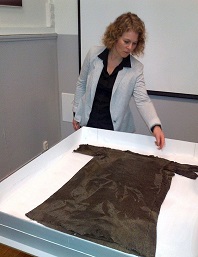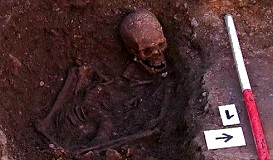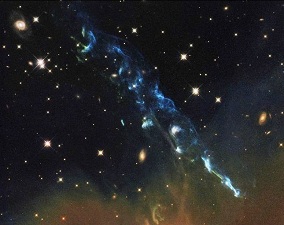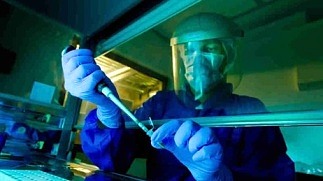Dr. Elhaik’s research shows that the dominant element in the genetic makeup of European Jews is Khazar. For Central European Jews it is 38%, while for East Europeans it is 30%.
On December 14, 2012, Dr. Eran Elhaik turned almost two generations of Jewish genome research upside down. But he went even further. The young Israeli-American geneticist has charged former researchers with academic fraud, and he has the research to back it up. How could those those eminent Jewish scientist before him have been so wrong? Easy says Dr. Elhaik, “First these researchers decided what conclusions they wanted to find, and then they set off to find evidence to support it.” I was not bashing Jewish scientists. What Elhaik has described is a slam dunk fraud. But why? Why would Jews who take such pride in the academic achievement risk exposing themselves to a group deception which was bound to be discovered later? Dr. Elhaik does not delve into the quicksand of the politics, but I will gladly do so. They perpetrated the fraud solely to support the bogus biblical claim to Palestine which was anchored in their being a separate people. This distinguished them from all others because they claimed a land title in their blood. They bet the farm on this DNA proof of purchase, a God given bar coded passport to the Palestine. Dr. Ehaik just erased the bar code. It was just stamped on anyway, because it was never in the blood. Dr. Elhaik’s research shows that the dominant element in the genetic makeup of European Jews is Khazar. For Central European Jews it is 38%, while for East Europeans it is 30%. To that you can add his findings that in both groups their genome is mostly Western European. Surprise, surprise. The Roman empire is the dominant lineage there, those that settled on the frontier, like retired soldiers, and the locals with whom they produced families. There were some Jewish merchants there as Elhaik did find some Middle Eastern roots which he suspects are Mesopotamian and a bit of biblical Israel. But here comes the slam dunk…the Israel connection is such a tiny part of their overall genome that it cancels out their DNA title claim to the Land. The good doctor would not wander into this swamp but I will, by calling a spade a spade. [H/T: xymphora: A short history of Polish colonialsim]
Eran Elhaik: The Missing Link of Jewish European Ancestry: Contrasting the Rhineland and the Khazarian Hypotheses. (Eran Elhaik, Ph.D.) - Abstract: The question of Jewish ancestry has been the subject of controversy for over two centuries and has yet to be resolved. The “Rhineland hypothesis” depicts Eastern European Jews as a “population isolate” that emerged from a small group of German Jews who migrated eastward and expanded rapidly. Alternatively, the “Khazarian hypothesis” suggests that Eastern European Jews descended from the Khazars, anamalgam of Turkic clans that settled the Caucasus in the early centuries CE and converted to Judaism in the 8th century. Mesopotamian and Greco–Roman Jews continuously reinforced the Judaized empire until the 13th century. Following the collapse of their empire, the Judeo–Khazars fled to Eastern Europe. The rise of European Jewry is therefore explained by the contribution of the Judeo–Khazars. Thus far, however, the Khazars’ contribution has been estimated only empirically, as the absence of genome-wide data from Caucasus populations precluded testing the Khazarian hypothesis. Recent sequencing of modern Caucasus populations prompted us to revisit the Khazarian hypothesis and compare it with the Rhineland hypothesis. We applied a wide range of population genetic analyses to compare these two hypotheses. Our findings support the Khazarian hypothesis and portray the European Jewish genome as a mosaic of Near Eastern-Caucasus, European, and Semitic ancestries, thereby consolidating previous contradictory reports of Jewish ancestry. We further describe a major difference among Caucasus populations explained by the early presence of Judeans in the Southern and Central Caucasus. Our results have important implications for the demographic forces that shaped the genetic diversity in the Caucasus and for medical studies.
Eran Elhaik: The Missing Link of Jewish European Ancestry: Contrasting the Rhineland and the Khazarian Hypotheses. (Eran Elhaik, Ph.D.) - Discussion: (Pages 71-72) A major difficulty with the Rhineland hypothesis, in addition to the lack of historical and anthropological evidence to the multimigration waves from Palestine to Europe (Straten 2003; Sand 2009), is to explain the vast population expansion of Eastern European Jews from fifty thousand (15th century) to eight million (20th century). The annual growth rate that accounts for this population expansion was estimated at 1.7-2%, one order of magnitude larger than that of Eastern European non-Jews in the 15th-17th centuries, prior to the industrial revolution (Straten 2007). This growth could not possibly be the product of natural population expansion, particularly one subjected to severe economic restrictions, slavery, assimilation, the Black Death and other plagues, forced and voluntary conversions, persecutions, kidnappings, rapes, exiles, wars, massacres, and pogroms (Koestler 1976; Straten 2003; Sand 2009). Because such an unnatural growth rate, over half a millennium and affecting only Jews residing in Eastern Europe, is implausible - it is explained by a miracle (Atzmon et al. 2010; Ostrer 2012). Unfortunately, this divine intervention explanation poses a new kind of problem - it is not science. The question of how the Rhineland hypothesis, so deeply rooted in supernatural reasoning, became the dominant scientific narrative is debated among scholars (Sand 2009).
Scribd: Johns Hopkins Genome Study of Jewish Origins (The Missing Link of Jewish European Ancestry: Contrasting the Rhineland and the Khazarian Hypotheses.) - Conclusions: We compared two genetic models for European Jewish ancestry depicting a mixed Khazarian-European-Middle Eastern and sole Middle Eastern origins. Contemporary populations were used as surrogate to the ancient Khazars and Judeans, and their relatedness to European Jews was compared over a comprehensive set of genetic analyses. Our findings support the Khazarian Hypothesis depicting a large Caucasus ancestry along with Southern European, Middle Eastern, and Eastern European ancestries, in agreement with recent studies and oral and written traditions. We conclude that the genome of European Jews is a tapestry of ancient populations including Judaized Khazars, Greco-Romans Jews, Mesopotamian Jews, and Judeans and that their population structure was formed in the Caucasus and the banks of the Volga with roots stretching to Canaan and the banks of the Jordan.
 CO2 myth busted: Why we need more carbon dioxide to grow food and forests
CO2 myth busted: Why we need more carbon dioxide to grow food and forests 












